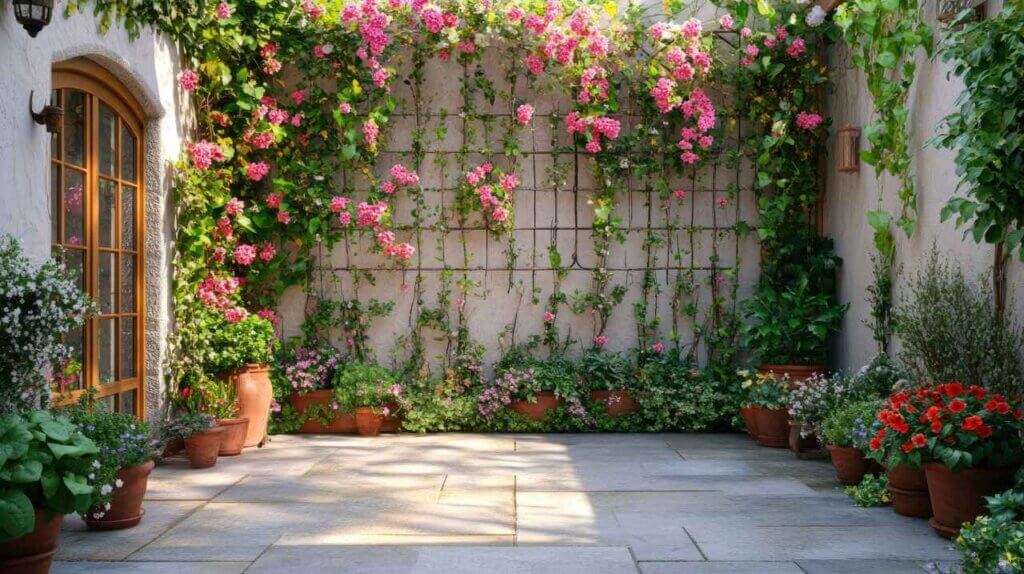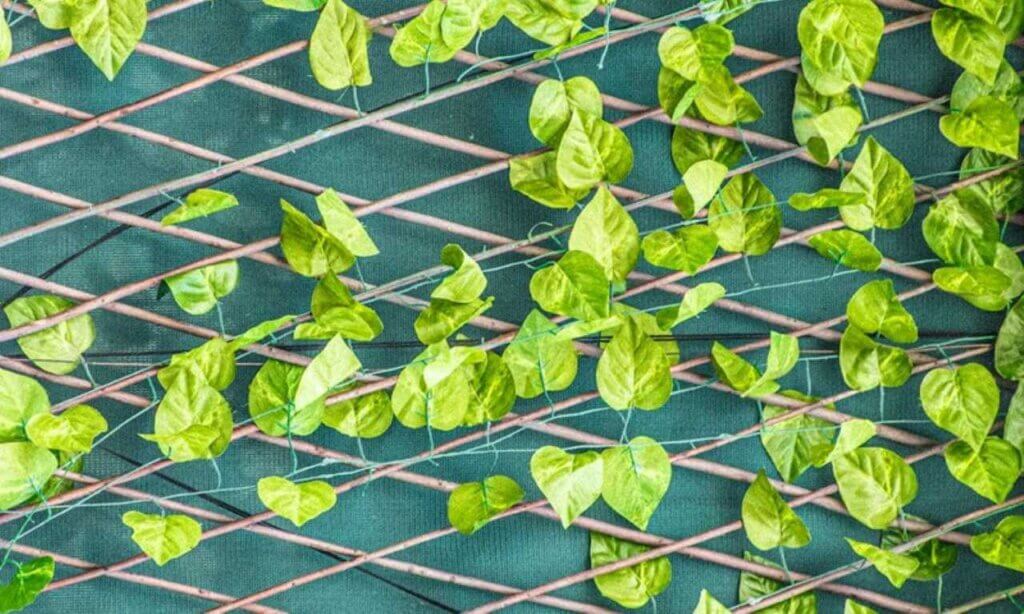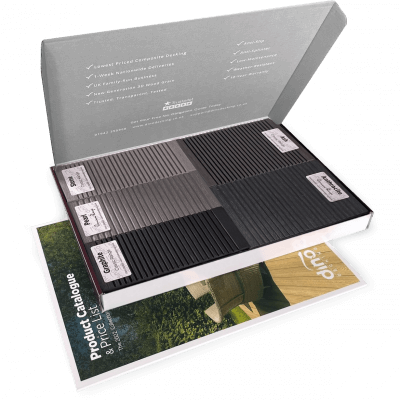5 Composite Decking Lighting Ideas
Our composite decking looks great in any setting, but you can really make your outdoor spaces shine with our decking
Products in Stock
Lowest Prices
Express Delivery
10-Year Warranty
Early April Sale. Up To 15% Off.

Whether it’s a rambling rose climbing gracefully up a weathered trellis, or a vibrant clematis weaving its way through an elegant obelisk, the right trellis can transform your climbing plants from unruly sprawls into captivating vertical displays, adding height, texture, and a touch of magic to your outdoor space.
But with so many different types of trellises available, how do you choose the perfect one for your climbing companions? We’ve got it covered; in the following blog, we’re going to guide you through the wonderful world of trellises, offering expert tips and insights to help you make the right choice for your plants and your garden design.
Trellises come in a variety of shapes and sizes, each offering a unique aesthetic and functional purpose. Let’s explore some of the most common types:
Flat trellises are a versatile choice, perfect for supporting climbers against walls, fences, or even as standalone features in your garden. They provide a simple and elegant backdrop for your plants to weave their magic.
Arched trellises add a touch of romance and whimsy to your garden, creating a graceful archway for your climbers to adorn. They can be used to frame pathways, create focal points, or even provide a shady retreat on a sunny day.
These striking structures add height and drama to your garden, providing a vertical focal point for your climbing plants. They are particularly well-suited for vigorous climbers that need plenty of support to reach for the sky.
Different climbing plants have different growth habits, so it’s essential to choose a trellis that provides the right kind of support.
Twining plants, such as honeysuckle and wisteria, wrap their stems around supports as they grow. Choose a trellis with vertical supports or a lattice design to provide ample opportunities for twining.
Clinging plants, such as ivy and climbing hydrangea, attach themselves to surfaces using aerial roots or adhesive pads. Choose a trellis with a rough surface, such as brick or stone, to provide grip for these climbers.
Scrambling plants, such as rambling roses and clematis, have long, flexible stems that need support to climb. Choose a trellis with horizontal wires or a mesh design to provide ample support for these sprawling beauties.
Trellises are crafted from a variety of materials, each with its own aesthetic and practical considerations.
Composite trellises offer a fantastic combination of durability, weather resistance, and low maintenance. They are made from a blend of recycled plastic and wood fibres, making them an eco-friendly choice that can withstand the unpredictable UK weather. For a premium and long-lasting option, consider our range of top quality composite trellis.
Wooden trellises offer a natural and timeless appeal, blending beautifully with garden landscapes. Choose from a variety of timbers, such as cedar or treated pine, and ensure the wood is treated to withstand the elements.
Metal trellises, such as wrought iron or steel, provide strength and durability, making them ideal for supporting heavy climbers. They can add a touch of elegance or a contemporary edge to your garden design.
Plastic or vinyl trellises are a budget-friendly and low-maintenance option. They are lightweight and easy to install, but might not offer the same longevity or aesthetic appeal as other materials.

Your trellis should complement your overall garden design, enhancing its style and creating a cohesive look. Consider the architectural style of your home, the existing landscaping, and the colours and textures of your plants when choosing a trellis.
Choosing the right size trellis is crucial for supporting your climbing plants and ensuring they have ample space to thrive.
For smaller climbers or those that are just starting out, a compact trellis will suffice. This allows the plant to establish itself and gradually fill the trellis as it grows.
For larger, more vigorous climbers, such as wisteria or climbing roses, choose a taller and wider trellis to accommodate their growth and prevent overcrowding.
Choose a trellis that’s easy to install and maintain. Look for features such as pre-assembled panels, adjustable legs, and durable finishes that require minimal upkeep.
At the end of the day, choosing the right trellis for your climbing plants is simple; just consider the type of trellis, the growth habit of your plants, the material, size, and overall aesthetic, and you can create a stunning vertical display that enhances your garden’s beauty and provides a haven for your climbing companions.
If you’re ready to transform your garden with the perfect trellis, explore our diverse range of options, including our different types of trellis, to find the ideal match for your climbing plants and garden design. Happy gardening!

Our sample pack contains a sample piece of each colour currently available. Order your free sample pack today to compare the colours and get a true feeling of the Dino Decking range!
Our composite decking looks great in any setting, but you can really make your outdoor spaces shine with our decking
If the idea of having rats under your decking makes you shiver, don’t worry. We’ll let you know the signs
Business hours
Monday: 09:00 – 17:30
Tuesday: 09:00 – 17:30
Wednesday: 09:00 – 17:30
Thursday: 09:00 – 17:30
Friday: 09:00 – 17:30
Saturday: Closed
Sunday: Closed
Contact us
01942 355968
support@dino.co.uk
Collection Address: Unit 1 Wetheral Close Hindley Ind Estate Wigan Greater Manchester North West WN2 4HS
Pages
Products
Testing
Copyright 2025 Dino Decking Ltd All Rights Reserved.
VAT Number: GB296097848.
Company Number: 10837233.